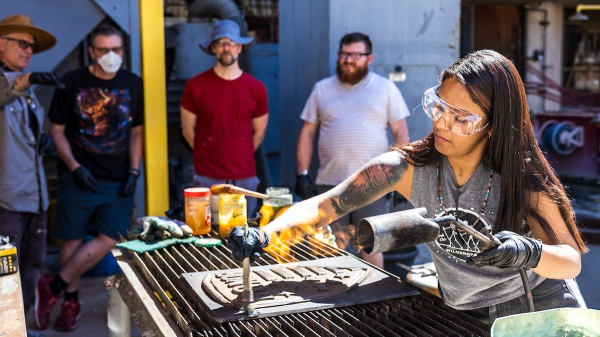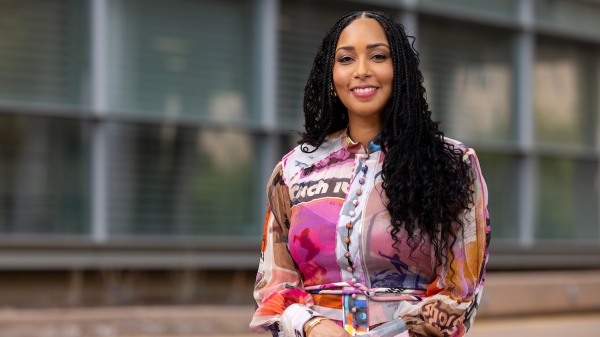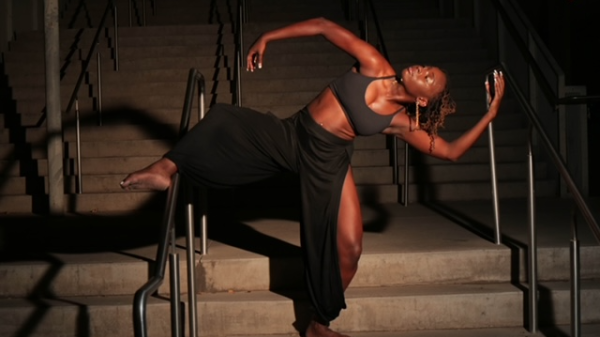There's got to be more than 'love'
ASU professor explains why our language has only one word for romantic affection, and how to ensure you can relate your feelings

Declarations of love will be everywhere this Valentine’s Day weekend, from sappy cards to bombastic displays of affection. But if you’re finding it difficult to express your romantic feelings, don’t despair — just blame the English language.
Whether it’s entrenched stoicism or a plain ol’ lack of creativity, our culture has a rather limited vocabulary to describe the most discussed aspect of our emotional spectrum.
In contrast, Sanskrit has nearly 100 words to characterize love. The ancient Persians had 80. Heck, the Eskimos have 50 words just for snow.
And we’re left with that one four-letter term to describe our heart’s reactions. L-O-V-E.
Making matters worse, “love” has become a catch-all term to describe romantic feelings, familial bonds, platonic attraction and just being infatuated with something. It’s enough to make you wonder how all these Valentine’s Day messages are so successful.
“People do often have trouble being specific about their positive emotions. We can talk about love and pride; other languages have different words for these emotions, and they’re often about our relationships with others,” said Michelle Shiota, an associate professor of social psychology in Arizona State University's Department of PsychologyThe Department of Psychology is an academic unit of the College of Liberal Arts and Sciences. and director of the SPLAT LabSPLAT stands for Shiota Psychophysiology Lab for Affective Testing. The lab is innovative because it explores the effects of positive emotions on our ancestors and how they continue to affect us in our day-to-day lives, physiological responses and relationships..
Shiota, who researches the complexities of cognition and emotion in relation to our personal relationships, explained that, historically, negative emotions like disgust, fear and anger are more recognizable, more identifiable with a term, because researchers have linked them to basic survival instincts. She said we are able to use terms to differentiate between these emotions because of the extensive research conducted to define them.
Also, the specificity of how we describe love varies throughout cultures, depending on whether they are more individualistic, like in the United States, or more collectivistic, like in Asia.
“Some cultures have more specific words for these crucial relationships,” Shiota said. “Less individualistic cultures have more variations which are specific to types of relationships.”
For instance, the Norwegian word “Forelsket,” which describes the euphoria felt while first falling in love.
It’s not just our language holding us back. Our cultural habits might also be preventing us from fully feeling — or at least expressing — our emotions and letting love in.
According to Shiota, a competitive nature and need for independence is part of the American mind-set, different from collectivist groups that are more open to intimacy and dependence.
“We have emotions that help structure society, and cultures have different ground rules,” she said. “In the U.S. we have different cultures that change how emotional traditions vary. It can become complicated to figure out how people emote things in general.”
In order to better understand our loved ones, we should follow the cues our emotions provide, Shiota said. Trusting positive and negative emotions as well as instinct allows us to make the judgments that help us form relationships.
“Our emotions can give us a lot of cues about who is going to be a long-term parenting partner, versus a long- or short-term partner. Our emotions can help us identify alliances and friends,” Shiota said. “People form judgments based on their subtle actions, and our emotions help us make those judgment calls.”
So even if you’re having difficulties composing a flowery love letter for your valentine, you can show him or her the depth of your feeling through body language or emotional display.
“Physiological changes are associated with emotions, facial expressions, posture, the way we touch people,” Shiota said. “People can tell based on touch, and voice is effective too.”
It’s better than relying on that one word to do it all.
More Arts, humanities and education

'Devils in the Metal': ASU vet leads iron cast workshop for former service members
Bruce Ward believes everyone has a symbol of strength or resilience, and they have an obligation to find it. His happens to be a paper crane in an ocean wave. “It’s the idea that we are the…

ASU English professor wins Guggenheim Fellowship for poetry
The awards — and opportunities — keep piling up for Safiya Sinclair, an associate professor in Arizona State University’s Department of English. In mid-April, Sinclair received one of 188 Guggenheim…

Graduate student creates community, connects with dancers of all ages
Editor’s note: This story is part of a series of profiles of notable spring 2024 graduates. For the last year, Arizona State University student Alecea Housworth has been living and teaching at…